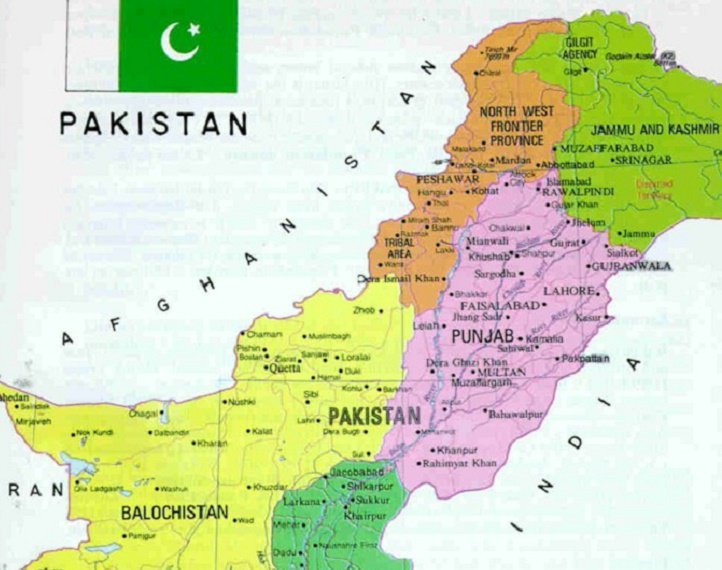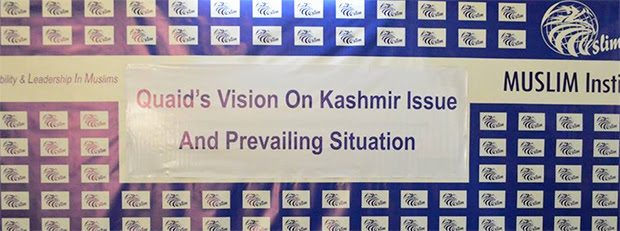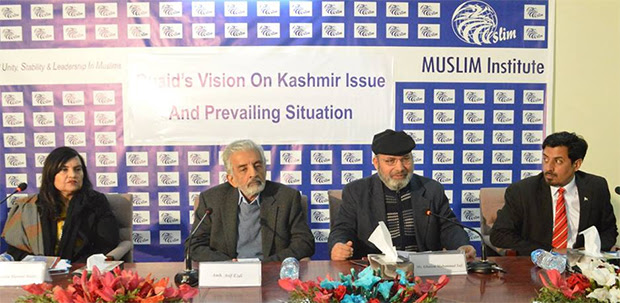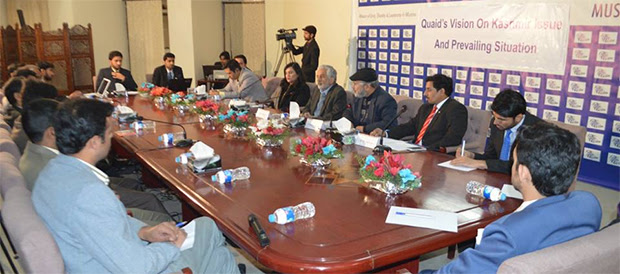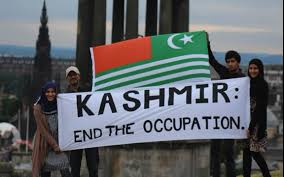 An Indian army soldier looks at the bodies of three Kashmiri Lashkar-e-Taiba fighters in Ponychak 17 August 2001, after they were shot dead by Indian troops, as they were trying to cross the border into Indian-occupied Kashmir. |
Following in the footsteps of the occupiers of Palestine, L. K. Advani, the Indian home affairs minister, announced on August 20 in Srinagar, capital of Indian-occupied Kashmir, that Indian soldiers accused of torture, extra judicial executions or rape of women would be immune to prosecution under a new law. Not that unruly Indian soldiers ever felt any compunction about killing or raping Kashmiris, but this new law tells the army of occupation that it has a complete carte blanche in its dealings with them.
This follows another announcement: India intends to double the strength of its military presence in Kashmir by raising 30 additional battalions of the Rashtriya Rifles over the next five years. India already has 700,000 soldiers in Kashmir who have indulged in wanton killing, terrorism and gang-rapes. At least 70,000 Kashmiris have been murdered since the uprising began in December 1989, and countless others maimed.
| _________ The Kashmiri struggle for self-determination has been misunderstood by most Muslims: they think it is merely a territorial dispute between India and Pakistan. ____________ |
The new Indian policy also confirms reports that India is working closely with Israel. Jane’s Defense Weekly reported last month that Indo-Zionist collaboration in the military, technological and intelligence fields had reached unprecedented heights. Each is an alien occupier involved in a campaign of state terrorism to crush the aspirations of the indigenous people. Both are also highly militaristic societies but present themselves to the world as “democracies”: Israel claims to be the “only democracy” in the Middle East; India maintains the fiction of being the “largest democracy in the world”. Yet their behavior in their occupied territories puts both outside the pale. Two other policies are common to both: each is involved in fighting the Islamic movement in the area that it occupies; each is an ally of the US.
These facts have important implications for Muslims globally. It is interesting to note that most Muslim regimes have no qualms about dealing with either. The close Indo-Zionist collaboration is also evident in their common stand vis–vis the World Conference on Racism in Durban, South Africa (August 31 to September 7). Israel, backed by the US, has been working overtime to smother debate on the theme of “Zionism is racism”, while India does not want its caste system to be discussed. At least 160 million Dalits in India live lives of degradation and humiliation under religiously-sanctioned apartheid.
India has been far more successful in hiding its ugly face than has Israel. But for some awareness among the Muslim masses of the Zionists’ crimes in Palestine, every regime in the Middle East would have ‘normalized’ relations with Israel long ago. Yet the same awareness does not exist when it comes to dealing with India. Even in such places as Tehran, the Hindus are welcomed and a number of trade and other agreements have been signed. The Kashmiri struggle for self-determination has been misunderstood by most Muslims: they think it is merely a territorial dispute between India and Pakistan. This shows the success of Indian propaganda.
Indian propaganda was somewhat blunted during the Agra summit (July 14-16) because of Pakistan’s insistence on the centrality of the Kashmir dispute. In fact, in Pakistan there had been hopes before the summit that India was now in earnest about resolving the 54-year-old ‘dispute’, but such hopes have now died. Islamabad now seems to understand that Delhi simply wanted the pretence of a dialogue, without really addressing the root of the problem. Vajpayee said that India was prepared to discuss Kashmir, but only as part of a “composite dialogue,” clearly rejecting its central position in the troubled relations between the two nuclear neighbors. In addition, India’s insistence on the inclusion of “cross-border terrorism” in the abortive joint declaration was mischievous and devious. No Pakistani ruler could agree to such an expression, because it has profound political and legal implications.
It implies first that the Line of Control (LoC) in Kashmir is an internationally-recognized border when it is not; second, that the uprising in Kashmir is not indigenous but instigated by “terrorists” from the Pakistani side of Kashmir. Indian rulers deserve full credit for deviousness; they have been trying to turn the LoC into an international border and have frequently suggested this at international forums, presenting it as a “reasonable” proposal. If Pakistan were to accept this, what was, and is the purpose of the uprising in Indian-occupied Kashmir that has been under way since 1989, in which more than 70,000 Kashmiris have perished and countless thousands have been maimed?
To suggest that the uprising in Kashmir is not indigenous is also an insult to the aspirations and sacrifices of the Kashmiris. No outside help can sustain a movement for 12 years if it does not enjoy local support. In fact, last year, when the Hizbul-Mujahideen announced a two-week ceasefire, Advani admitted that the uprising was indigenous and that Delhi had to talk to these groups. Advani, and indeed Indian rulers in general, have a remarkable ability to speak from both sides of their mouths.
This was also evident in the manner in which they approached the Agra summit. While publicly stating that they would like to be flexible on Kashmir, and would like to create an atmosphere conducive to good neighborliness, in private they have insisted on Pakistan surrendering to Indian demands.
Indian hypocrisy is also evident in the fact that immediately after the Agra talks, Delhi announced the formation of another 30 battalions of the Rashtriya Rifles to be deployed in Kashmir. Similarly, the Disturbed Areas Act as well as the Special Armed Forces Act, under which soldiers are exempt from any legal constraints, have been extended to Jammu as well (until recently they had applied only to Kashmir and to areas within 20 kilometers of the border in Jammu).
The Hindustan Times reported on August 4 that since Delhi ended the ceasefire in Kashmir in May, the number of Kashmiri deaths has risen from 97 to 225 per month. India insists on calling them “militants.” India’s own casualties at 43 per month have remained steady (before India’s ceasefire announcement of last November, casualty rates were about 160 “militants” and 36 Indian soldiers per month.) Clearly India has intensified its violent policy in Kashmir even while claiming to be talking “peace” with Pakistan. It was to discuss these “successes” that Advani went to Srinagar and gave the glad tidings that henceforth Indian soldiers could shoot to kill and rape women without any fear of restraint or punishment.
Despite all this, India continues to enjoy an excellent press in the west, especially now that the US wants to enter into a strategic partnership with it in order to contain China. Next time someone talks about “democracy,” human rights or self-determination in the US, advise them to examine the record of its two allies, Israel and India, and try to explain why they should have a license to kill, pillage and rape any people.
___________________________________
Zia Sarhadi writes for Crescent International, the newsmagazine of the global Islamic movement.

